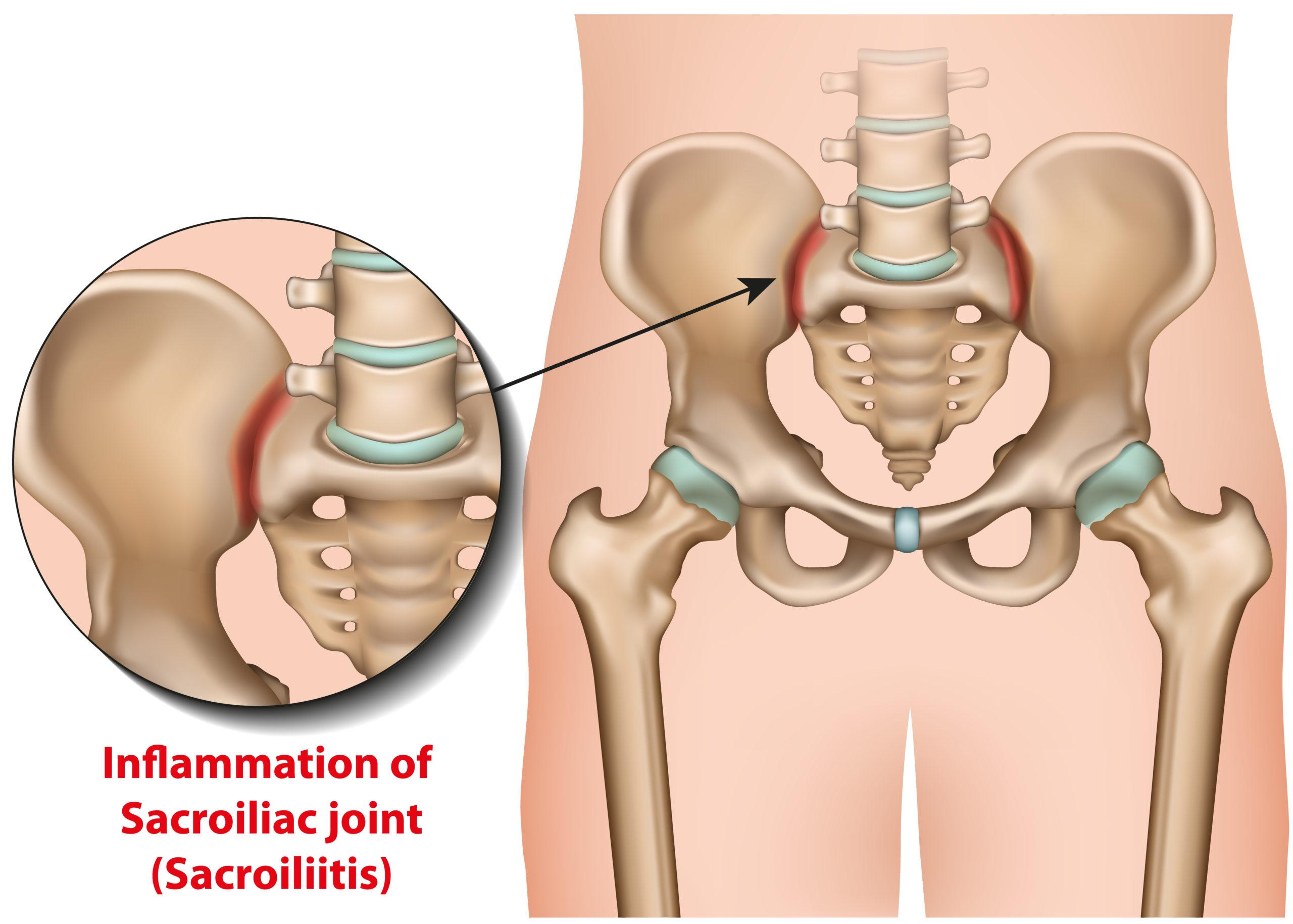Sacroiliitis Treatment in Maple Grove
Sacroiliitis Treatment Maple Grove. Lower back pain is widespread, with 20% of Americans experiencing it in the last year. Worst of all, most people have no idea what is causing the issue or how to treat it. Although there are countless conditions and causes of lower back pain, sacroiliitis is one of the most common culprits.
If you're trying to determine the cause of your lower back pain, this article will help you establish whether or not sacroiliac (SI) joint dysfunction is the problem and which treatment options to pursue.
What is sacroiliitis?
Sacroiliitis is a condition that affects the sacroiliac joint, which is located in the pelvis and surrounded by tough ligaments that provide support and stability. Think of sacroiliac joints as shock absorbers for the spine, translating forces between the upper and lower body into everyday movements like walking, running, and climbing stairs.
Any joint in the body can be injured or damaged, resulting in pain and limited mobility. The SI joint is no different.

What causes SI joint pain?
While doctors have not established precisely what causes sacroiliac joint dysfunction, the consensus is that it's due to a change in the joint's normal motion. Disruption of normal motion generally falls into one of two categories.
First is hypermobility, or a sudden increase in the volume or range of movement that the SI joint is used to handling. When this is the case, patients usually experience pain in the lower back that may also radiate into the groin.
The other disruption is hypomobility, an issue of too little movement in the SI joint. In this situation, discomfort may reside in the lower back or buttocks and radiate down one leg, generally in the rear of the thigh.
Leading causes of sacroiliac joint dysfunction:
- Injury or severe trauma to that part of the body
- Overuse or repetitive movement
- Arthritis or other degenerative conditions
- Pregnancy
- Obesity
Thankfully, there are plenty of avenues for Maple Grove patients to relieve SI joint pain. Rest, ice, heat therapy, and pain medication offer mild relief. However, chiropractic treatment provides long-lasting relief from sacroiliac joint dysfunction, strain, and general mobility issues.
Will a chiropractic adjustment treat sacroiliitis?
There are several treatments for patients suffering from pain stemming from issues with their sacroiliac joint. However, chiropractic care is commonly considered the first line of treatment. Since different patients tolerate treatment options differently, the first objective of chiropractic treatment for sacroiliac joint pain is not only to reduce pain in everyday movements but to find sustainable adjustment techniques that minimize discomfort.
A Maple Grove chiropractor can help you develop a holistic treatment plan for sacroiliac joint pain. Dr. Brent Tieri from Total Spine Health and Injury Center uses a variety of diagnostic tests to zero in on your problems and design a regimen to fix them. The uniquely structured and non-invasive treatments lead to swift and effective pain relief that enriches long-term health and wellness.
What methods will a chiropractor use to ease sacroiliac joint pain?
After diagnostic tests and a detailed physical exam, a chiropractor will generally begin one of two types of treatments: spinal manipulation or spinal mobilization.
Spinal manipulation
The spinal manipulation technique pushes your SI joint past its range of motion with a quick thrust of pressure (sometimes called high-velocity, low-amplitude (HVLA) movement) to your hip.
This movement usually results in a familiar "cracking" sound, called cavitation, created when oxygen, nitrogen, and carbon dioxide escape from the joint. Although the cracking sound that accompanies a chiropractic adjustment may make some patients anxious or afraid, it often accompanies significant relief.
Spinal mobilization
For patients who cannot tolerate or withstand the swift HVLA movement, spinal mobilization is an effective alternative. This gentler and less forceful spinal adjustment involves slower (low-velocity) techniques that allow the joint to remain within its passive range of motion.
What are the signs and symptoms of sacroiliitis?
Sacroiliac joint pain is similar to other spine disorders in that it can manifest differently in each person. Some of the most apparent symptoms and telltale signs include:
- Discomfort while walking, with pain shooting from your back down to your legs.
- Pain while driving, particularly when working the pedals.
- Inability to perform familiar physical activities ranging from sports to climbing stairs.
- Significantly reduced tolerance for weight-bearing exercises.
- Agonizing stiffness in your hips and lower back.
While chiropractic adjustments are the quickest and safest avenue for pain relief, Maple Grove patients can speed up recovery and pain management at home.
What are some at-home stretches for sacroiliac joint pain?
Aside from medical and chiropractic therapies, patients can manage sacroiliitis with at-home stretches and exercises. However, anyone experiencing back pain should be cautious when beginning a new fitness routine. Always talk to a chiropractor first.

Consistency is crucial when following a stretching regimen to relieve lower back pain. There are several options for sacroiliac joint stretches, but these are some of the most common:
- Piriformis stretch - Lie on your back with your knees bent and your feet planted on the floor. Raise your right or left leg, interlace your fingers just beneath the knee of the raised leg, and slowly pull it toward your chest. Lower it to the floor after 30 seconds and switch legs.
- Lower trunk rotation - Lie on your back with your knees bent and your feet, back, and hips planted on the floor. Keep your knees touching each other while slowly rotating them to one side until they touch the ground. Hold this position for five seconds on each side and aim for five repetitions per side.
- Bridge stretch - Lie on your back with your knees bent, your feet planted on the floor, and your hands palm down on either side for support. Carefully raise your hips toward the ceiling while keeping the rest of your body still. Aim for five repetitions of five seconds each.
These stretches will provide some degree of relief from SI joint pain. However, they will only be moderately effective unless you work with a chiropractor who knows how to treat sacroiliac joint pain.
Pain relief for Maple Grove residents with lower back pain
If you are experiencing lower back pain, you should schedule a chiropractic evaluation as soon as possible. Whether you are suffering from sacroiliitis or another spine-related issue, chiropractic adjustments will likely be the most sustainable solution for pain management.
With a 5-star rating based on over 100 reviews, Total Spine Health and Injury Center is one of the top chiropractic clinics in Maple Grove. Book an appointment today for lasting relief from lower back pain.
